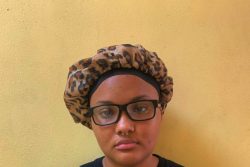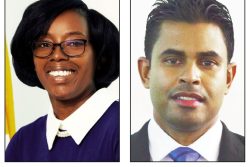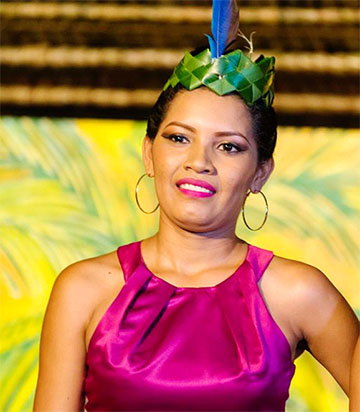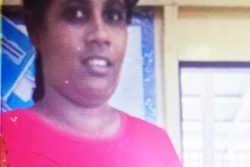REPORTS out of Guyana from the opening matches of the President’s Cup (presumably Julian Hunte’s rather than Bharrat Jagdeo’s) have made dismal listening and reading.
Andrew Mason, Barry Wilkinson, Curtly Ambrose and their colleagues on the Line and Length radio coverage have repeatedly bemoaned the standard of play and the general lack of cricketing commonsense. Sometimes, I swear Mason has been on the verge of breaking into tears at the sheer mediocrity of Barbados’ performances.
Teams have laboured and repeatedly failed to reach 200 on pitches seemingly, but hardly surprisingly, so slow and low that Trinidad and Tobago and the universities handed their new ball to spinners to open the bowling.
The chief wicket-takers in the first round were mainly those who, like dawdling drivers on the highway, were most dangerous through their lack of pace – among them unfamiliar names like Crandon, Bishoo, Vermaul, Athanaze, Kantasingh and Dewar, an under-19 guaranteed a lucrative contract from a famous whisky brand if he goes much further.
To add to the frustration, rain caused three of Friday’s matches to be abandoned, always a risk in that part of the world, whatever the time of year.
It means that, in a tournament condensed as it was to two groups of four, the affected teams eliminated after round one would have had only two matches.
It is the kind of useless backdrop against which Clyde Butts and his fellow selectors, like so many of their predecessors, meet this weekend to chose their West Indies’ 15 for the tour of Australia November 18 to December 20, with its three Tests in Brisbane, Adelaide and Perth.
From the start, it was obvious that a 50-overs-an-innings tournament in Guyana would provide neither proper preparation for Australia nor a suitable guide to selection.
The only similarity between Enmore and Everest and the Gabba in Brisbane and the WACA in Perth, for instance, is that they are officially cricket grounds. Coping with sluggish deliveries that barely get up above knee high as the former bears no relation to what West Indies batsmen can expect from Mitchell Johnson, Brett Lee and Peter Siddle firing it past their noses on their home patch. The one helpful purpose of the Guyana experience, once the West Indies Cricket Board (WICB) made participation mandatory for qualification for Australia, was to determine which of those players who pulled out of the series against Bangladesh were committed to a return to the fold. Since all are in Guyana, it is reasonable to assume that the West Indies Players Association (WIPA) has given the go-ahead and Butts, Raphick Jumadeen and Robert Haynes can pick from a full slate.
The last time they could do that was on July 6 when they named the following 13 for the first Test against Bangladesh: Chris Gayle (captain), Denesh Ramdin (vice-captain), Adrian Barath, Dwayne Bravo, Sulieman Benn, Shivnarine Chanderpaul, Narsingh Deonarine, Runako Morton, Brendon Nash, Ravi Rampaul, Andrew Richardson, Ramnaresh Sarwan and Jerome Taylor. Fidel Edwards was injured and not considered.
A day later, the whole lot pulled out, several more declined to take their places and the WICB had to hastily raise a replacement team to fulfil its obligations.
It was not experienced enough, not prepared well enough and, simply, not good enough for the assignment, even against Bangladesh with its staggering record of a solitary victory (over depleted Zimbabwe) in 59 previous Tests.
On pitches not dissimilar to those on which their batsmen are now struggling in Guyana, the West Indies were beaten in both Tests and all three ODIs. The defeats were repeated when the same players were retained for the Champions Trophy in South Africa.
Yet, in the interim, there have been several individual advances to interest the selectors as they consider their best combination for Australia. Their problem is how to accurately assess them in the context of runs and wickets against Bangladesh and in limited-overs matches and, in one absolutely criticial instance, of captaincy in a Twenty20 tournament.
While those originally chosen for the Test against Bangladesh made their decision and remained idle, Travis Dowlin, Dave Bernard, Darren Sammy, Kemar Roach, Nikita Miller and Gavin Tonge used their unexpected opportunities to advantage. While Gayle’s perceived role in the players’ strike and his negative comments about Test cricket and the burdens of captaincy in a newspaper interview back in May placed his position in doubt, Daren Ganga emerged as a late contender for the position on the strength of his guidance of Trinidad and Tobago in inaugural Champions League in India.
The WICB directors – and they, not the selectors, will make the ultimate decision – now have several options for the position (Gayle, Ganga, Ramdin, Dwayne Bravo, all of whom have led the West Indies for varying periods and with varying lack of success).
So turbulent is the situation, as it has been for years, that whoever is chosen will not come as a shock, except perhaps to the individual himself – or if Floyd Reifer is retained to the post he filled in the emergency of the strike.
Once that matter is settled – and, as much as the board loathes him (and vice versa), Gayle remains the strongest candidate – the squad itself is next on the agenda, always remembering that the mission is exclusively for Tests. The ODIs and Twenty20s are down the line in February.
By their record and their experience, seven returning players merit sure selection, whatever has happened while they were occupying themselves with fun matches involving Olympic champions and football stars.
As the one settled opener with 82 Tests, 5,502 runs and 71 wickets to his name, Gayle is as vital to the balance of the team as anyone, whether or not he is captain.
Ramdin was wicket-keeper for 36 Tests before the split, Bravo is the only proven all-rounder at present and the importance of Chanderpaul and Sarwan in the middle order is obvious.
If too prone to injuries, Taylor and Edwards are bowlers of pace capable of winning sessions and matches, only if too occasionally.
Nash’s welcome stability at No.6 in his nine Tests also just about places him in that category.
The spots that remain to be filled have been problems for a decade and more – an opening partner, or partners, for Gayle, a batsman at No.4 to divide Sarwan and Chanderpaul, a spinner, perhaps even two, an all-rounder and a couple of additional fast bowlers.
The likeliest nominees would be: Barath and Devon Smith as openers, Deonarine, Dowlin and Lendl Simmons (who can double as opener, reserve keeper and impromptu medium-pacer) for No.4, Benn, Miller and Dave Mohammed as spinners, Bernard and Sammy as all-rounders and Rampaul, Roach and Tonge as fast bowlers.
No one is that group has a stronger case than any other. Selection being such a subjective task, others would doubtless come into the discussions, but not many.
Australia presents more exacting challenges than anywhere else at present. Given the divisions caused by the WICB-WIPA row and the negligible preparation (accentuated by a solitary warm-up match in Australia before the first Test), the West Indies face a virtual mission impossible, whoever is chosen.
As likely as guesswork can be in the present circumstances, here’s a stab at the squad of 15: Gayle (captain) and Barath, Sarwan, Simmons, Dowlin, Chanderpaul and Nash, Dwayne Bravo and Sammy, Ramdin, Miller, Edwards, Taylor, Roach and Rampaul.









